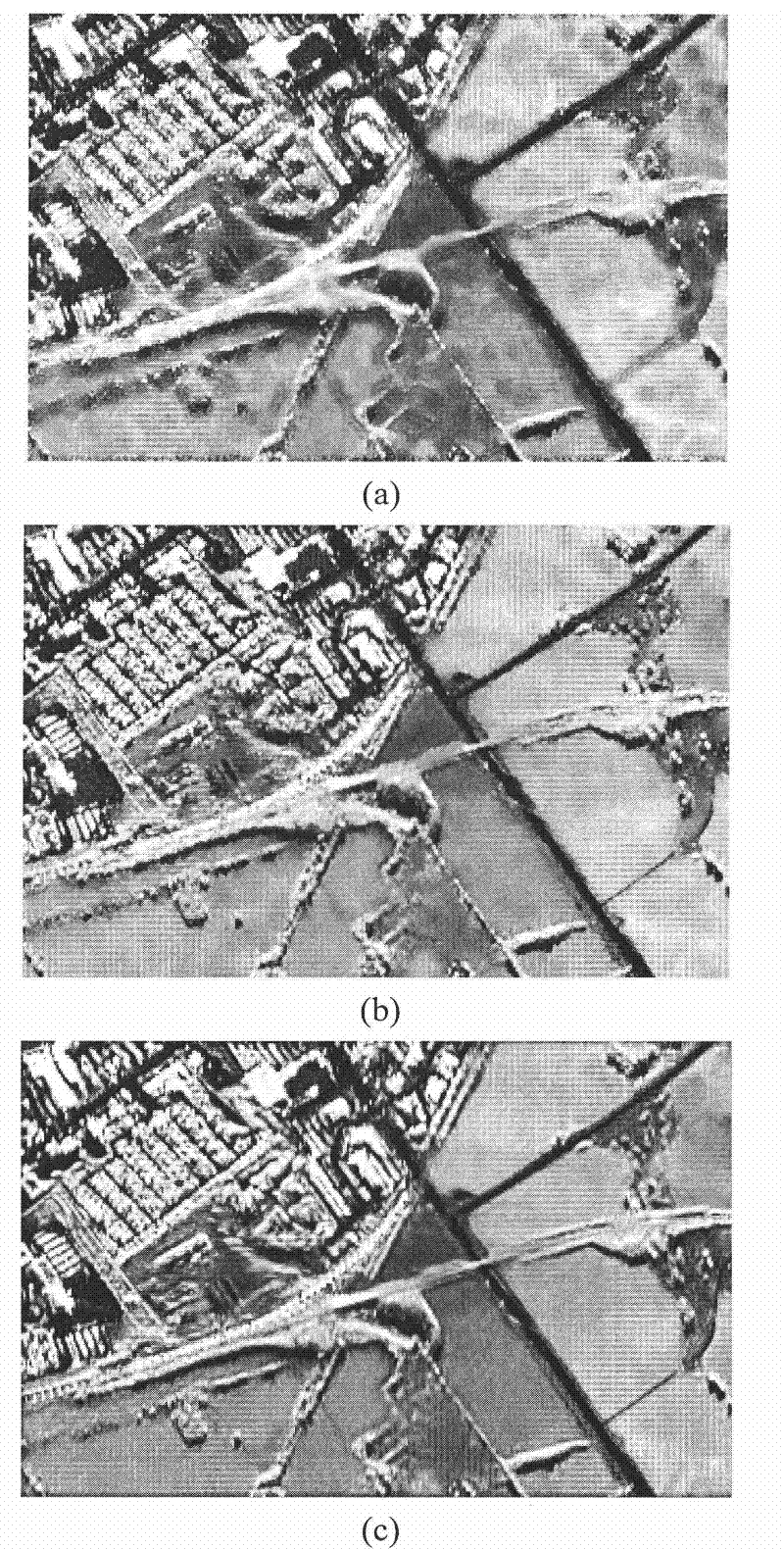Method for restraining speckles of polarized SAR data based on Bayes non-local mean value
A technology of coherent speckle suppression and local mean, applied in image data processing, radio wave reflection/re-radiation, measurement devices, etc., can solve dark pixel errors, original data characteristics cannot be well preserved, and edge texture information cannot be captured Integral retention and other issues to achieve the effect of maintaining polarization correlation
- Summary
- Abstract
- Description
- Claims
- Application Information
AI Technical Summary
Problems solved by technology
Method used
Image
Examples
Embodiment Construction
[0030] refer to figure 1 , the specific implementation steps of the present invention are as follows:
[0031] Step 1: Detect and save the bright target in the coherence matrix T of the polarimetric SAR data.
[0032] 1a) Express the coherence matrix T as:
[0033] [ T ] = AA * AB * AC * BA * BB * BC * CA * CB ...
PUM
 Login to View More
Login to View More Abstract
Description
Claims
Application Information
 Login to View More
Login to View More - R&D
- Intellectual Property
- Life Sciences
- Materials
- Tech Scout
- Unparalleled Data Quality
- Higher Quality Content
- 60% Fewer Hallucinations
Browse by: Latest US Patents, China's latest patents, Technical Efficacy Thesaurus, Application Domain, Technology Topic, Popular Technical Reports.
© 2025 PatSnap. All rights reserved.Legal|Privacy policy|Modern Slavery Act Transparency Statement|Sitemap|About US| Contact US: help@patsnap.com



